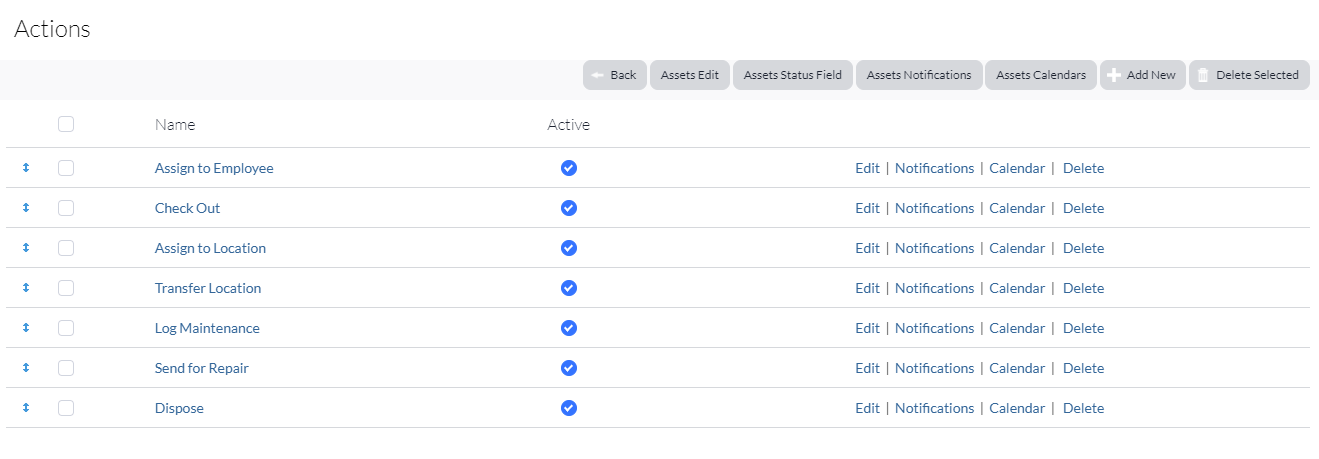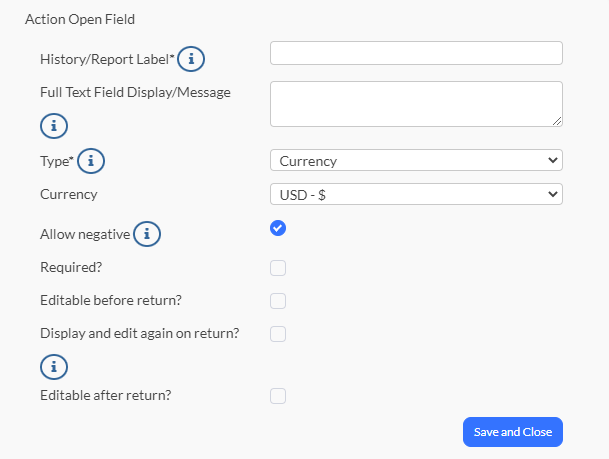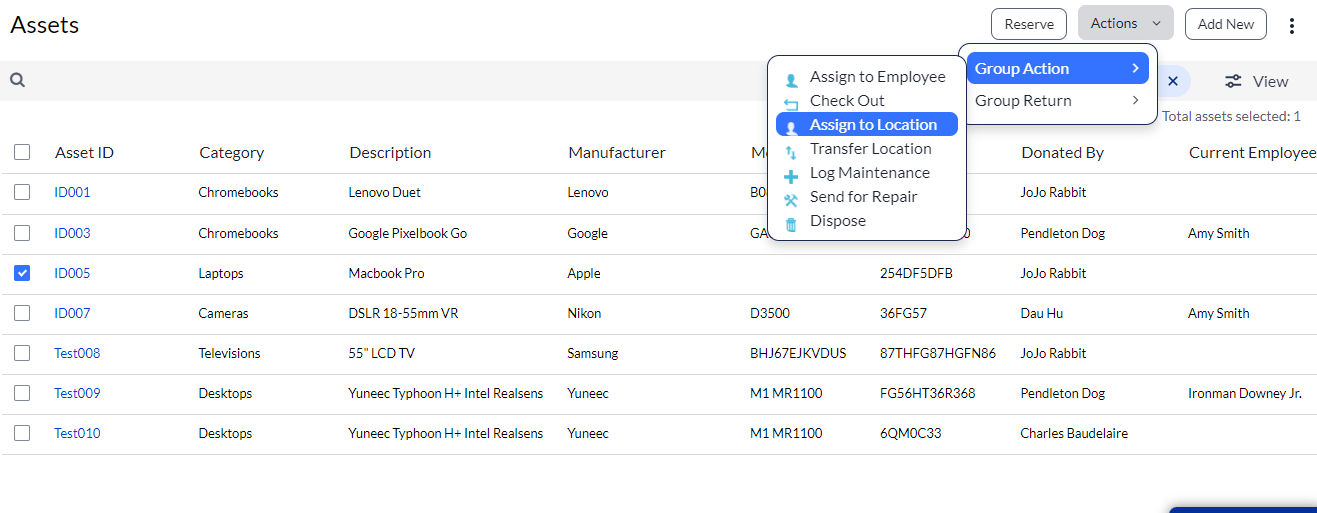An explanation of Asset Panda actions and what they do.
What are actions and what do they do?
Actions perform specific functions that allow you to see exactly what it is you need/want to see in relation to your assets. They help you to create and track activity histories on individual group records, allowing you to stay on top of all that is happening with these assets.
Asset Panda arrives ready to basically "plug and play" meaning that we provide out-of-the-box actions but these aren't required and you may wish to ultimately create your own. You also have the option to edit these out-of-the-box actions to better suit the needs of your organization.
How would I use it?
Let's say one of your assets is laptops. You want to keep track of important information such as who has a specific type of laptop, the locations of your laptops, which are out for repair and when, and so forth.To do this, you'll need a way to view these very specific pieces of information, rather than have to sift through lots of irrelevant stuff that doesn't apply (and could quite possibly take up a lot of your valuable time).
Take the Log Maintenance action (shown in the list of Actions below). This action would be a great way for you to view maintenance histories of your laptops, helping you to make sure you're staying on top of software updates, and other maintenance-related tasks.
Or, maybe John Doe has decided to leave the company. The Assign to Employee action is a great way to find out which laptop John has, making sure he returns the laptop he was initially assigned. You'll be set to use the Transfer Location action to reassign the laptop to Jane Doe, a new employee in another location.

What are action fields?
Simply put, action fields drive some kind of action. A car with no engine won't get you anywhere, neither will an action with no fields. Think of it this way, these fields are built into an action and are the wheels that put it all into motion. In other words, they make stuff happen.
One of the places you'll find them within the Asset Panda API is when you are updating action fields
Examples of these editable and updateable action fields within this API are (but not limited to):
typeis_return_fieldis_requiredis_editable
How would I use it?
Let's say you have created an Assign to Employee action. You want to of course add fields so that you can actually use the action to help you keep track of your laptops. You want to know who your laptops are assigned to, who logged the assigned laptop, the date it was assigned, the date it was returned, and any other pertinent information.You would create action fields within your Open, Closed, and Change fields to make these tasks possible.

The Action Open Field screen below will give you a good idea on how these specific object types are used within the Asset Panda application itself, along with what they do. (The following screen will display when you click Add New to add a new action field.

What are group actions?
Group actions drive the actions for entire groups in that they apply one action to multiple items. While you can of course apply actions to one asset at a time, group actions allow you to apply actions to an entire group of assets at once.
How would I use it?
Let's say you want to assign all of your Apple Macbook Pro laptops to a specific location. Performing such a task by selecting each laptop one by one would be cumbersome, which is where a group action enters the picture (allowing us to all breathe a sigh of relief).You can find an API example of group actions within GET Group Actions.
The Assets screen below will give you a good idea on how group actions are used within the Asset Panda application itself, along with what they do.

